All about hydrangea tree
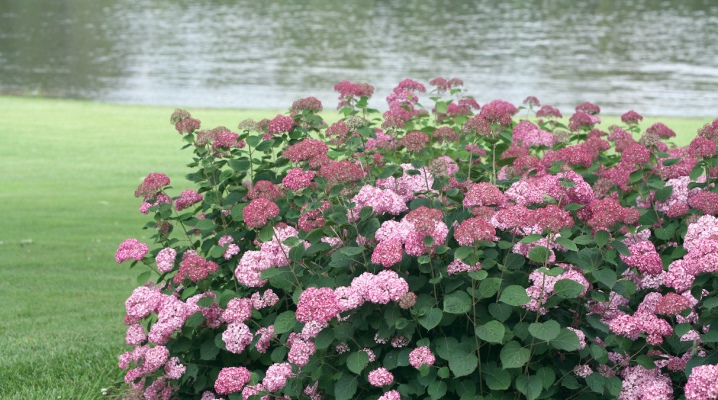
Among garden flowering crops, hydrangea enjoys a well-deserved popularity among landscape designers and amateur gardeners around the world. The culture is presented in a wide variety of species, where special attention is paid to the tree hydrangea, which includes many beautiful flowering varieties.
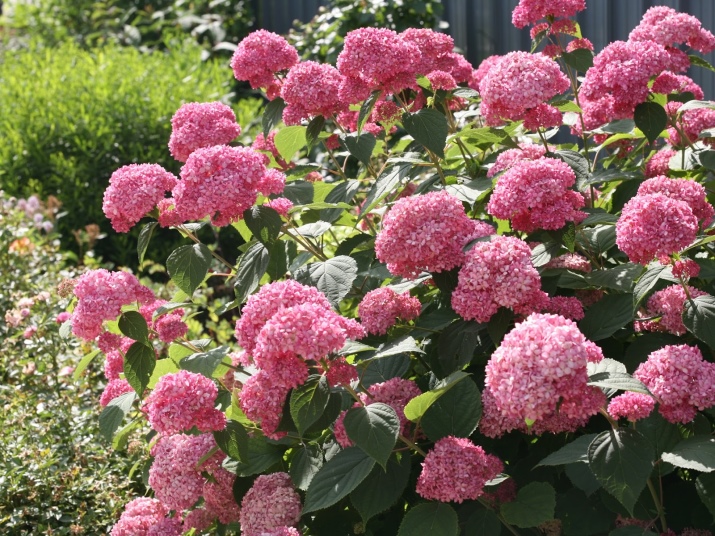
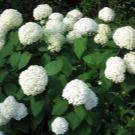
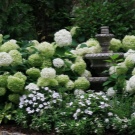
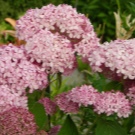

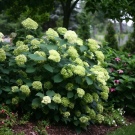
Description
The culture of the genus Hydrangea is found both in the wild and is actively cultivated as a beautiful garden plant. In the natural environment, hydrangea tree-like can most often be found in Asian countries, on Sakhalin. In horticulture, the culture is successfully grown in open ground all over the world, since a huge number of varieties with different winter hardiness indicators allow you to have a beautiful plant on your site even in Siberia, the Urals or in the Moscow region.
The plant is a shrub or small tree of different sizes depending on the variety, blooming with spectacular inflorescences in the form of a shield, ball or cone, which can reach 20 centimeters in diameter. The birthplace of this type of hydrangea is considered to be North America. Culture is of particular value for gardeners and landscape designers due to its beautiful and long flowering, as well as unpretentiousness in terms of general agricultural technology. Typically, the best plant varieties are able to bloom from June to September.
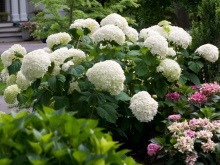
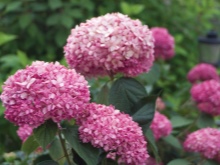
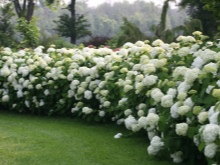
On average, the height of a tree hydrangea varies within 1.5-2 meters. The green mass is predominantly oval, painted in rich shades, erect shoots. It is noteworthy that hydrangea leaves do not lose their bright color even after drying. In some varieties, with the arrival of autumn, the foliage acquires additional red pigments in color, which emphasize the attractiveness of the plant. The flowers that form numerous hydrangea inflorescences can be of two types. Typically, sterile varieties are concentrated at the edge when reproductive species are in the center of the inflorescence.
For gardeners, there is a huge selection of flowers and shades of hydrangeas, ranging from the most popular white to beautiful crops with blue, purple, red and yellow inflorescences.
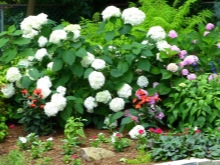
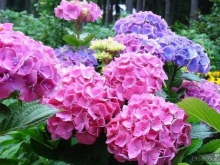

Translated from Latin Hydrangea means "vessel with water". There are two versions of a similar name, one of which is the similarity of the fruits of the culture with a jug, and there is also an opinion that the hydrangea received a similar name in light of its moisture-loving nature.
The varieties presented in a large variety of colors, as well as the ability of the tree hydrangea to actively increase its size in the horizontal direction, allow the plant to be used not only as independent and single plantings in the garden, but also as a flowering and dense hedge in landscape design. Inflorescences cover the crown everywhere, which has a positive effect on the external attractiveness of the plant.
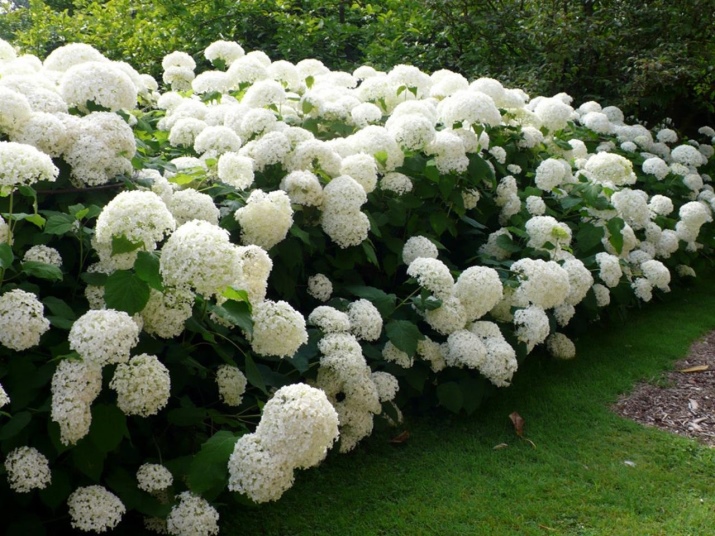
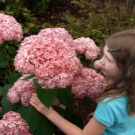
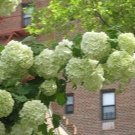
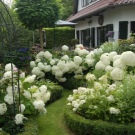

Popular varieties and their shades
Treelike hydrangea can become a decoration of any garden area or public area. Today, the culture is represented by a large assortment of varieties, among which several names are especially popular.
"Incredible"
A first-class version of a blooming culture in the garden in terms of winter hardiness, which is very common in Russian latitudes. The culture develops, forming rather strong shoots, on which inflorescences of no less remarkable size grow. Due to the endurance of the branches, they do not break off even under the weight of their numerous and large flowers. The bush will have a rounded crown shape, as a rule, the plant in adult form reaches a height of one and a half meter mark. The inflorescences are in the shape of a ball, in diameter they can reach 20-22 centimeters. Initially, the color of the culture is close to lemon, but over time in the garden, the culture changes the color of its inflorescences to white-cream, by autumn the variety will have green inflorescences.
The culture begins to bloom in the first summer month, while the flowers retain their freshness and attractive appearance until the first autumn frosts.
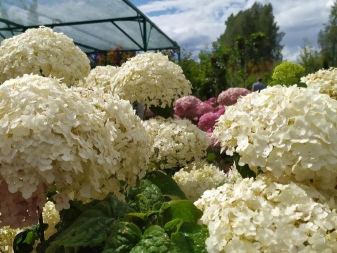
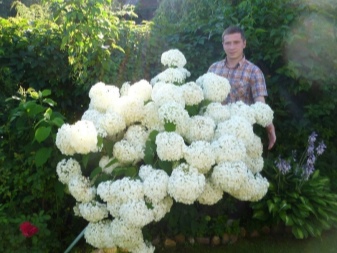
"Sterilis"
An equally attractive variety, the inflorescences of which, developing, form an interesting hemisphere shape. Hydrangea blooms from June to October, at the beginning of summer the inflorescences will be white-green.
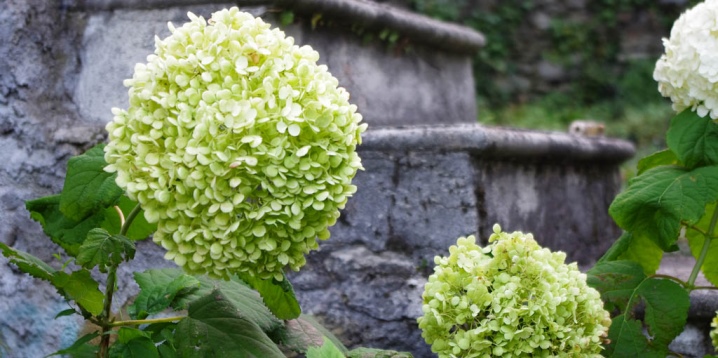
Hayes Starburst
Among the available tree hydrangea varieties, this variety develops the slowest, but this quality does not affect the overall attractiveness of the culture. The bush has rather large inflorescences in the shape of a sphere, covered with double flowers. Usually the diameter of the inflorescences of this variety is close to 25 centimeters. Initially, they contain flowers that are smaller in size compared to subsequent seasons.
A well-planned agricultural technique will allow the grower to have an incredibly beautiful flowering plant in his garden.
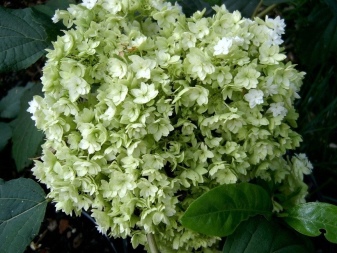

"Invincibelle"
A fairly young variety of tree hydrangea, which blooms with pink inflorescences. However, the property to change the color of the petals is also inherent in this variety. Therefore, at the beginning of summer, they will be a rich pink hue, later they become lighter, acquiring brighter and lighter shades. According to breeders, it is this plant that is able to maintain its viability in the open field even when the thermometer marks drop to -37 ° C. The diameter of the inflorescences is 15-20 centimeters, however, correct and timely pruning of the crop will increase these values up to 30 centimeters.
Despite the rather impressive size of the "blooming balls", hydrangea grows in height by no more than 1.5 meters.
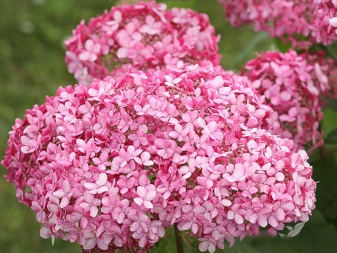
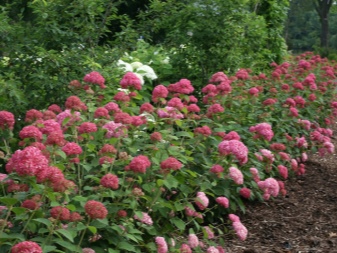
"Anabel"
Another representative of winter-hardy hydrangeas, which is ideal for Russian climatic conditions. The culture is of medium size, blooms with lush light flowers, collected in spherical inflorescences.
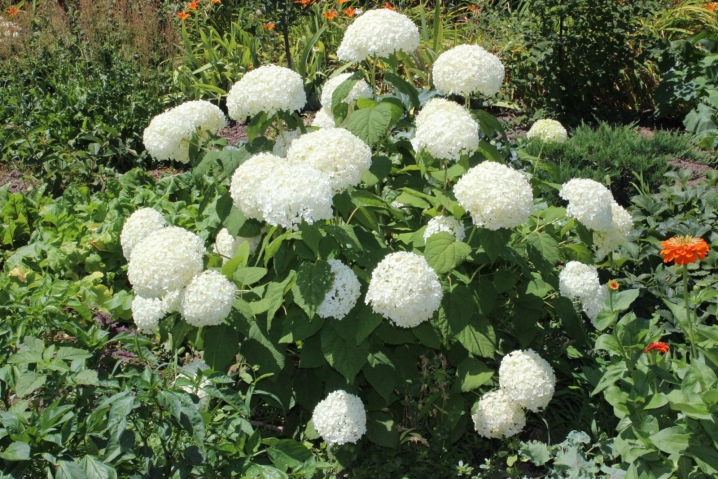
"Pink Pinkushen"
Small garden hydrangea - in adult form, its height varies from one to one and a half meters with similar parameters regarding the width of the shrub. The inflorescences are pyramidal in shape, while the color of the flowers will be pink, but in rather delicate colors, in early summer. Later, the bush may change the color of its flowers. The culture of this variety is notable for its good indicators of resistance to negative temperatures, in addition, the plant stands out for its immunity to most common ailments, it tolerates drought and is able to develop and bloom even in places with polluted air.

"Bounty"
A beautiful culture with small white flowers. The variety belongs to light-loving plants, therefore, it is able to demonstrate its decorative attractiveness as much as possible only in areas where access to sunlight will not have obstacles.
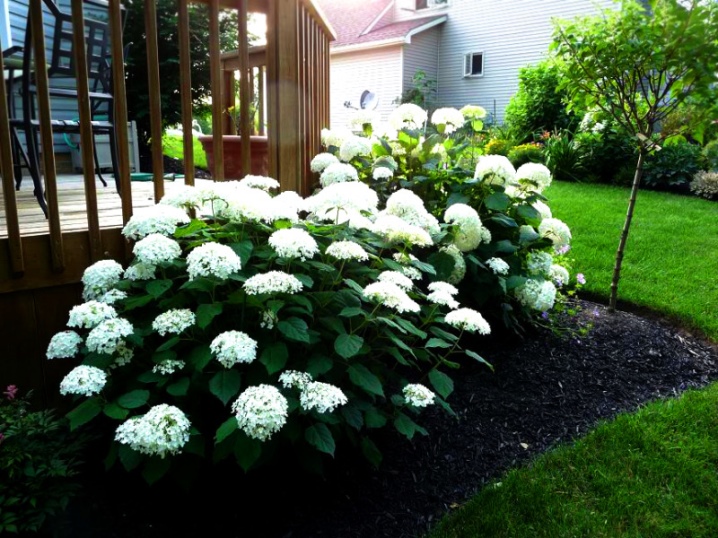
In addition to the above varieties of tree hydrangea, "Magic Pinkerbell", "Bella Anna" and other equally attractive varieties are popular with gardeners.
We take into account the climate and choose a place
Despite the plant's unpretentiousness to growing conditions, in order for the tree hydrangea to bloom and develop normally, before rooting a seedling of a culture, it is necessary to choose the right place for it in the garden. First of all, this concerns access to sunlight: the flower will not grow well in the shade, so it will need a place with sufficient lighting, but without direct sunlight throughout the day. Otherwise, flowering may not come at all, or this phase will last no more than a week.
Besides, lack of sun can lead to a decrease in the size of flowers and the inflorescences themselves... The species is also represented by winter-hardy varieties, therefore, tree hydrangea can be planted in regions with any climate, but take into account the culture's attitude to light.
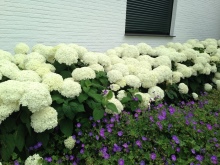
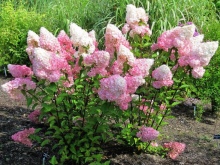
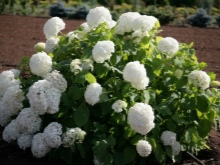
It is worth rooting the hydrangea at a distance from other crops, especially trees, at least 2-3 meters so that they do not shade the flower during the growth process.
It should be borne in mind that even strong and strong shoots of a culture can break from the wind, so the site for growing a plant should be reliably protected from drafts. The north will be the optimal side for the hydrangea, you can root the hydrangea near buildings.
There are a number of recommendations regarding the preferred soil type for tree hydrangea. So, the culture grows well in the soil with slightly acidic or high acidity. In such a soil, the shade of the flowers of the plant will be as bright as possible. In alkaline soil, there is a great risk that the hydrangea will begin to suffer from various ailments, and will soon die.


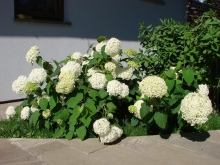
Landing
It is recommended to purchase seedlings or hydrangea seeds only in proven specialized nurseries. In the first case, before buying, you should pay attention to the root system of the plant you like. Ideally, the root of the culture should be covered and well protected.
Usually, seedlings are sold in separate containers, the optimal age for a crop ready for transplanting in open ground will be 3 or 4 years.
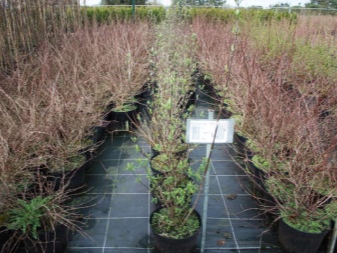
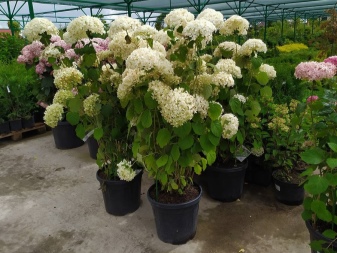
Timing
After buying a seedling and choosing a suitable place in the garden, it is worth deciding on the right time for the rooting of the culture. Most experienced florists recommend planting work in the first months of spring. Depending on the climate in a particular region, these may be different months and weeks of the year. But the general condition for all is the presence of ground thawed from snow in the garden. Besides, on the acquired culture, the buds should not yet bloom.
To root hydrangeas in the garden in regions with a warm climate and winters without lowering the temperature to negative values, you can postpone work on planting hydrangeas in open ground until autumn.

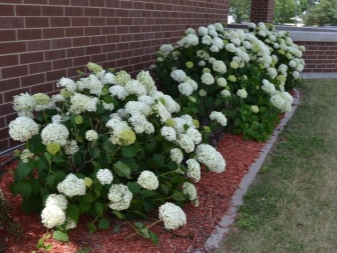
rules
Cultures should be rooted, adhering to the recommendations of experts.
- The plant prefers loose soil with a good level of aeration and moisture permeability. The optimal acidity indicator will be a value in the range from 5.5 to 6 pH.
- A few days before the intended landing on the site, it is necessary to dig a hole, the diameter of which will be about half a meter, with the same depth. For poor soils, it is recommended to make the planting hole deeper in order to lay a layer of important fertilizers for the crop at the bottom.
- The day before planting, you need to pour 4-5 buckets of water into the hole, give time for moisture to absorb. The next day, lay on the bottom a drainage layer, necessary in one case or another, fertilizers to normalize the acidity of the earth.
- Too long roots are cut off the culture before planting. Place it in the center of the hole, straighten the root system so that there are no creases, sprinkle it with earth, leaving the root collar above the soil surface. It is most correct to tamp the earth so that voids do not form in the near-trunk circle. After which the culture should be watered abundantly.
- To maintain the moisture of the earth, it is necessary to cover the ground around the hydrangea with a layer of mulch, which in summer will become an additional source of fertilizer for it. For these purposes, you can use needles, wood chips. The mulch will prevent the growth of weeds, but the diameter of the laid layer should not exceed 15 centimeters.
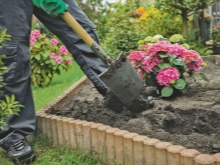
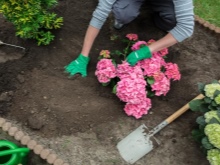
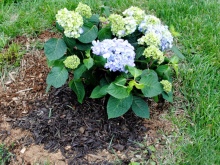
Frequent mistakes
Many inexperienced growers can root crops in soil with a lot of sand. In such a soil, hydrangea will develop very poorly. To solve this problem, when planting a plant in a hole, a clay castle should be formed, which can retain moisture and nutrients in the ground.
Problems in the culture can arise if the seedling is not stored correctly at home. To maintain the viability of the underground part of the hydrangea before planting, it is recommended to moisturize it abundantly, regardless of the season and air temperature.
The flower, whose underground part will be much smaller than the aboveground one, is recommended to be planted in open ground as soon as possible, since the evaporation from the foliage and the minimum moisture reserve in the root coma can provoke the death of the plant.
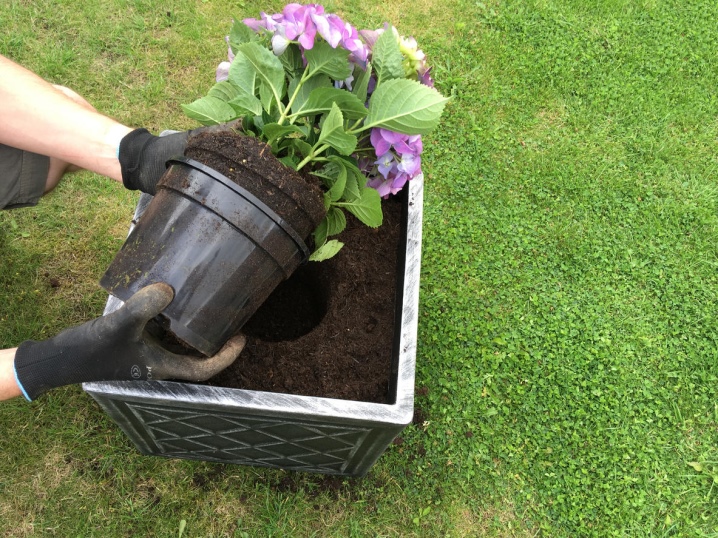
Care
After planting, further agrotechnical measures are reduced to performing a number of mandatory works.
Watering
Treelike hydrangea is a moisture-loving culture that grows rather quickly. Lack of fluid has an extremely negative effect on its appearance and condition. Watering, depending on weather conditions, should be regular and abundant. In the heat, you can moisten the culture 3-4 times a week. The soil should be saturated with liquid by at least 50 centimeters. Adding manganese to the water will be useful when watering, which is able to strengthen the shoots of hydrangea.
Before wintering, on the eve of the first frost, the plant is watered for the last time.
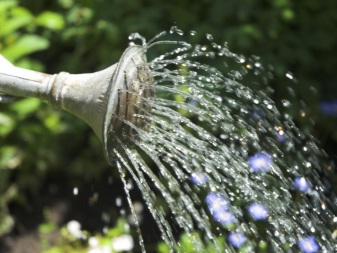
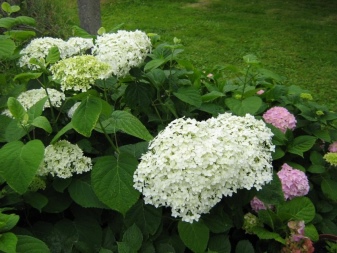
Top dressing
Today, the cultivation of such a flowering plant will be impossible without the introduction of additional fertilizing. As a rule, fertilizers are used three times during the season.
- After rooting in the garden, after 14-15 days, the hydrangea should be fed with potassium sulfate, superphosphate or urea. Such work should be carried out every spring.
- In early summer, the plant will need to replenish its supply of important trace elements for abundant and long-lasting flowering. During this period, nitrogen-containing compounds should be avoided, which will activate the growth of green mass, and focus on the introduction of phosphorus and potassium as fertilizers. You can use complex formulations for flowering garden plants.
- By the fall, it is recommended to fertilize the culture with organic matter; for this it is worth using last year's manure. This will be the final stage of the introduction of dressings.
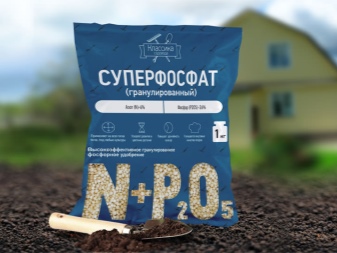
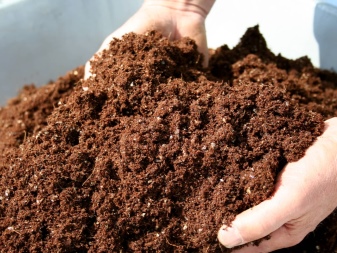
In addition to the obligatory dressings, special formulations can be used for the tree hydrangea, which will allow you to change the color of the inflorescences.
- To achieve a blue flowering from the culture, it is recommended to add aluminum sulfate to the water when watering. For one square meter of area, about 500 grams of the substance will be needed.
- In order for the hydrangea to bloom blue in the garden, it will need aluminum phosphate, at least 15 grams per liter of liquid.
- To dye flowers in lilac color, it is worth using copper sulfate as a top dressing in the amount of 1 teaspoon per 7 liters of water. This substance can also contribute to the appearance of a mix of pink and blue flowers on the bushes.
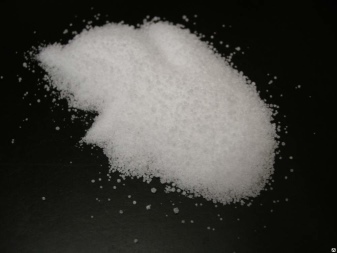
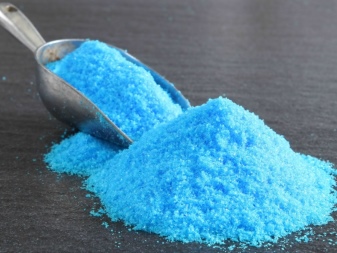
Pruning
For hydrangea, tree pruning, carried out every season, is an important component of all agricultural technology. A novice gardener needs to know that a planned and correct haircut will help the culture to throw out large and spectacular inflorescences, which makes it different from the large-leaved hydrangea. Neglect of such work will lead to excessive thickening of the crown, as a result, the plant will have an unattractive appearance.
The first planned pruning is carried out to the plant at the age of 5-6 years; at an earlier age, cutting can adversely affect the development of culture. Usually, such work is carried out in early spring - in March-April. At the same time, it is necessary to remove from the shoots of the culture no more than one third of the length, be sure to leave at least 3-4 buds on the hydrangea. With sanitary pruning, dry and frozen branches are subject to separation from the plant.
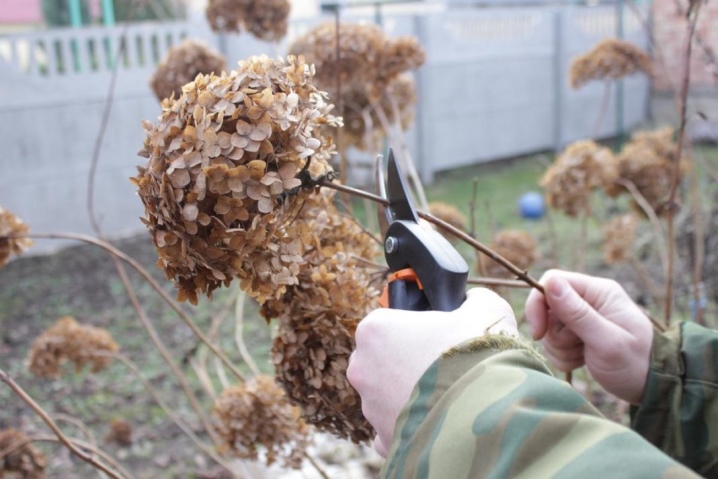
Reproduction
You can get a new culture on your own in several ways.
Cuttings
Usually, activities for the procurement of planting material are carried out in the middle of summer. It is better to cut the cuttings of the hydrangea in the morning, choosing young annual shoots that have already become woody, and the best option would be to have two internodes on them. The green mass on the selected shoots must be partially removed, the cut must be treated with a growth stimulator.
Rooting of cuttings is carried out in a container with a soil mixture consisting of sand and peat. It is necessary to deepen them into the ground at an angle of 45 degrees, but no more than 2-3 centimeters. For group planting, seedlings must be placed at a distance of at least 10 centimeters from each other.
As a rule, cuttings will have time to take root sufficiently in a month, then they can be transplanted into open ground.
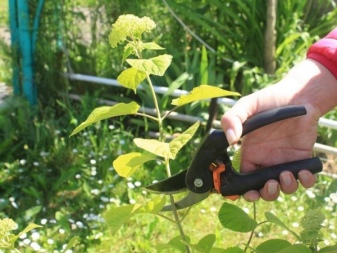

Layering method
To get a young hydrangea in the garden in this way, it is necessary to choose a healthy lateral shoot from an adult plant, which will not be more than one year old. Deepen it into a special trench, secured with wire at the bottom, and sprinkle with soil. Next year, it will be possible to separate the cuttings from the mother bush by rooting in the chosen place.
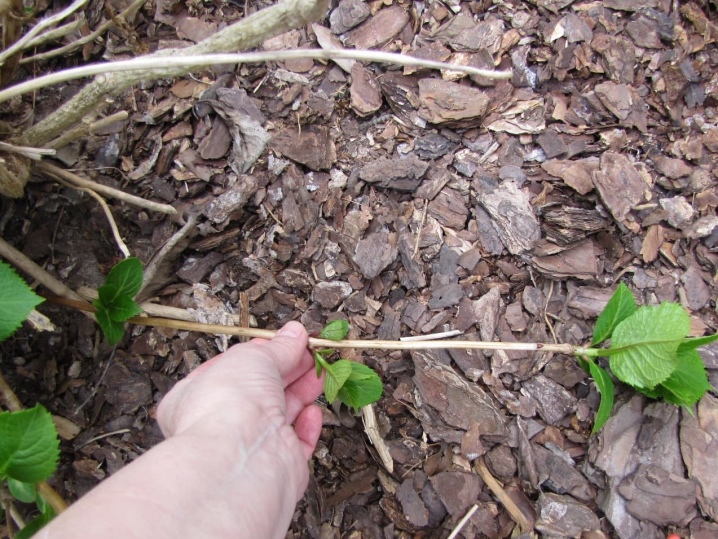
Diseases and pests
In general, the culture demonstrates high rates of immunity, therefore, diseases are rarely affected. However, if the summer is too rainy, the plant may suffer from powdery mildew. And also the development of such a disease is possible with improper agricultural practices related to excessive watering. Fungicides are used to treat hydrangeas. In addition, you will need to adjust the watering regime.
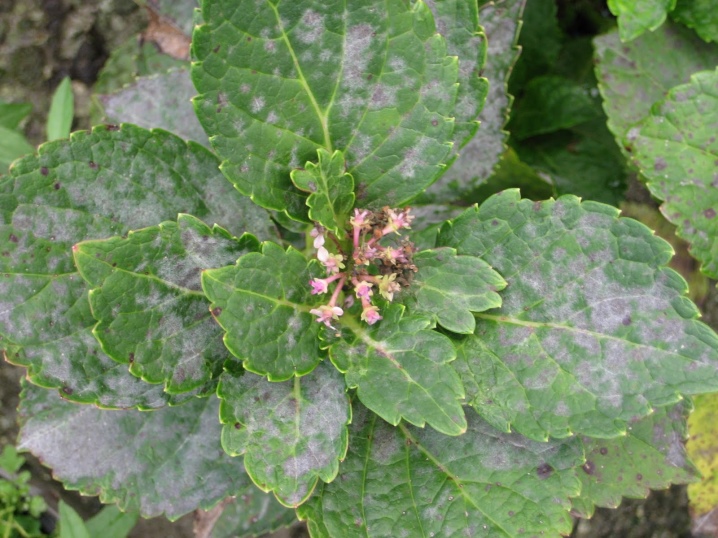
Among the dangerous insect pests that can harm the flower, it is worth noting aphids and spider mites. The appearance of these pests will be visible with the naked eye, in a neglected form and in the presence of a large number of insects, the hydrangea does not bloom, its leaves dry and curl. To destroy the pest, ready-made store-bought insecticidal compositions are usually used to spray the aboveground part of the hydrangea.
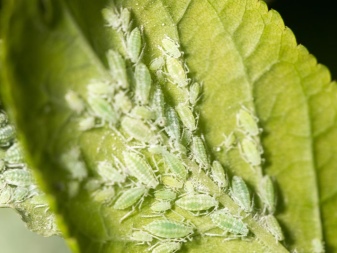
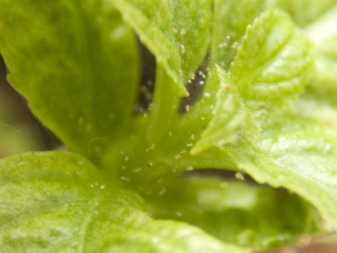
Examples in landscape design
Shrubs of white tree hydrangea in the front garden can become a real decoration that will definitely attract attention with lush and spectacular spherical inflorescences.
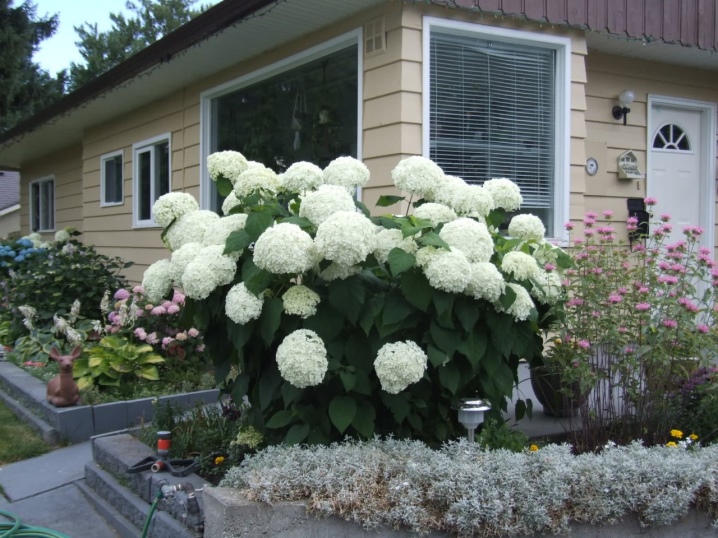
No less attractive will be hedges made of lilac varieties of hydrangea, allowing you to decorate any part of the garden.

Special attention should be paid to joint compositions from several varieties of culture, which will create a beautiful and blooming area on the site.
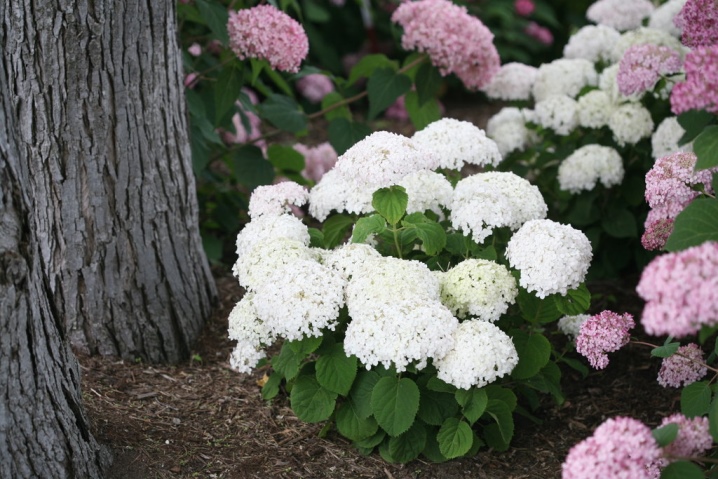
For more information on this hydrangea, see the next video.



































































The comment was sent successfully.